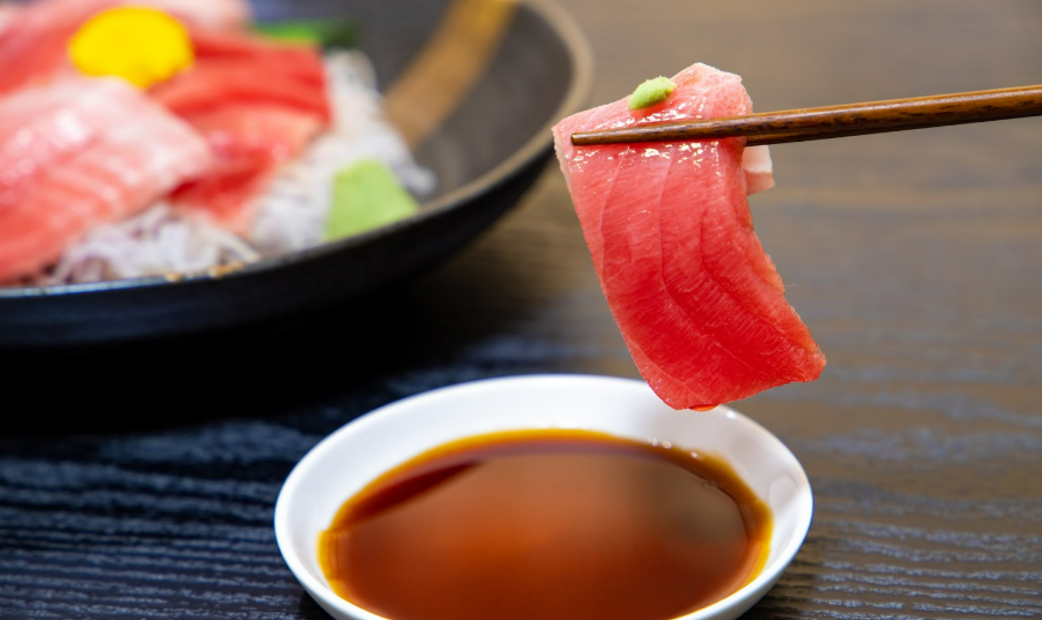
Introducing table manners and dining etiquette that you can really use when traveling in Japan.
- 1. Approach your meals with a positive and open-minded attitude.
- 2. Show respect to the chefs and artisans who prepare your food.
- 3. Be considerate and avoid causing inconvenience to other customers and the restaurant.
- 4. Japanese table manners and dining etiquette tips to help you have better dining experiences
- Popular Recommended Restaurants You Can Reserve on OMAKASE
1. Approach your meals with a positive and open-minded attitude.

Before diving into the specifics of manners and etiquette, let's discuss how you should approach your meals for the best possible dining experience.
(1) First and foremost, enjoy the taste of the dishes in the best possible way.
Japan boasts the highest number of Michelin-starred restaurants. The chefs at these establishments take their craft seriously and work meticulously to provide you with exceptional dining experiences. They rise early to source the finest ingredients, build strong relationships with local farmers and fishermen, and prepare dishes with numerous detailed steps honed through years of training. They tirelessly focus all their energy on the first bite that you, the customer, will have.
How can you best express your gratitude to these artisans? By enjoying each bite of their creations in the best possible condition. Approach your visit to the restaurant with this mindset for a memorable meal!
(2) Enjoy your dining experience wholeheartedly.
The best reward a restaurant can receive is seeing you fully enjoy your meal and leave with a smile. Many Japanese sushi and cuisine restaurants are small, privately owned establishments where chefs put their heart and soul into creating exquisite dishes. They hope you leave with a big smile, and they won't be offended as long as you wholeheartedly enjoy your meal, even if you aren't familiar with using chopsticks or traditional etiquette.
While many articles detail the nuances of table manners and dining etiquette, most of those points aren't worth worrying about too much. By learning the minimal etiquette, looking forward to your meals, and acting considerate toward the restaurant and other customers, you'll be warmly welcomed.
Approaching your dining experience with a positive attitude is your first step to enjoying meals at restaurants in Japan!
2. Show respect to the chefs and artisans who prepare your food.
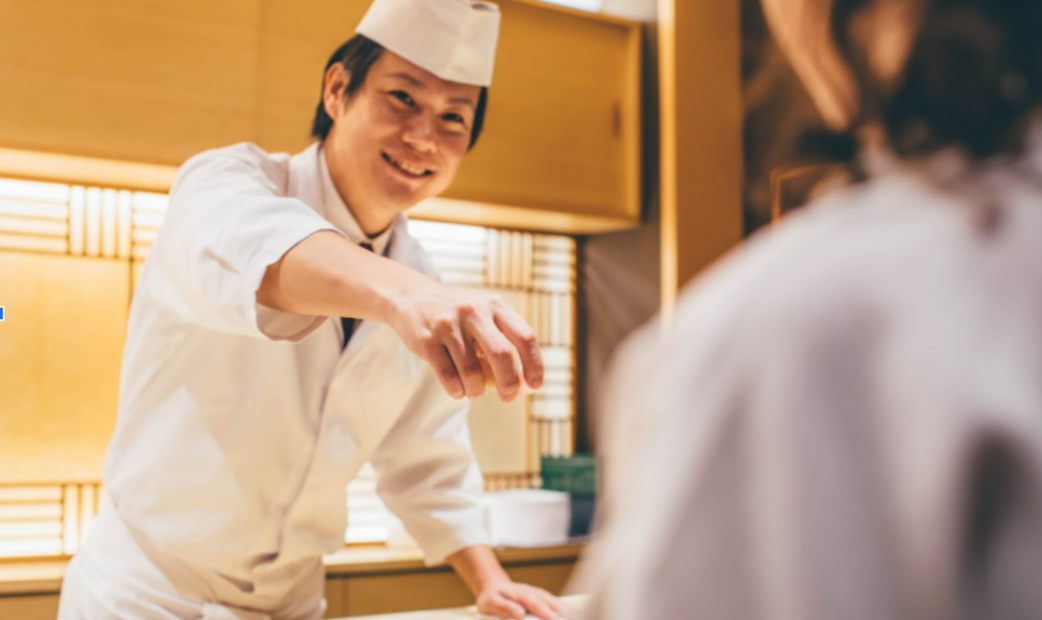
In restaurants where advanced reservations are required for omakase courses and meals are enjoyed at counter seating, chefs dedicate their time and effort to prepare exceptional meals for you. Showing respect through your actions enhances your dining experience.
(1) Inform the restaurant of your allergies and dietary restrictions ahead of time.
If you have dietary restrictions, allergies, or foods you cannot eat for religious reasons, please inform the restaurant when making your reservation. When booking online, include details about your allergies and dietary restrictions. This also applies if someone in your group has specific restrictions.
In restaurants serving omakase courses, chefs source ingredients in advance for preparation, so menu changes cannot be made on the day of your meal. In Japan, leaving food on your plate is generally considered disrespectful. Providing the necessary information beforehand allows you to fully enjoy your prepared meal.
(2) Arrive early for your reservation.
Many high-end restaurants in Japan begin serving their omakase courses simultaneously for all customers. Arriving five minutes early and entering the restaurant at your reservation time helps the restaurant and other diners enjoy the same course seamlessly. Since some restaurants can be hard to find, allow ample time for getting to the restaurant. If you arrive considerably late, the restaurant may need to shorten your course or may not be able to serve you at all.
(3) Start eating each dish immediately once served.
The flavor of dishes begins to fade just seconds after they are served. Dishes prepared with care over a long time are presented at the optimal time for the best taste. Showing respect means eating each dish when it is at its freshest.
Try to avoid leaving your seat during the course, including for bathroom breaks, if possible. If you must step away, do so in between the dishes in the course. Chefs would be quite disappointed if they slowly cooked and prepared a meat dish over several hours, only for you to be gone from the table when it is being served. If you're unsure of the best time to leave, ask the chef or restaurant staff for guidance.
(4) Order Drinks to Show Gratitude!
While restaurants provide top-notch service and expertly prepared dishes, they don't often make significant profit from meals alone. Japanese customers typically order drinks to express gratitude for the hospitality they receive. Water is usually free, so ordering a soft drink, mineral water, or alcoholic beverage would be appreciated. You don't need to go overboard, but ordering a whole bottle would truly make the restaurant staff feel delighted!
(5) Compliment the Chef on Delicious Dishes.
If you enjoy your dish, let the chef and staff know! While Japanese people may be reserved and not show much emotion outwardly, the chef and staff are usually thrilled when told by customers how much they are enjoying their meals.
3. Be considerate and avoid causing inconvenience to other customers and the restaurant.
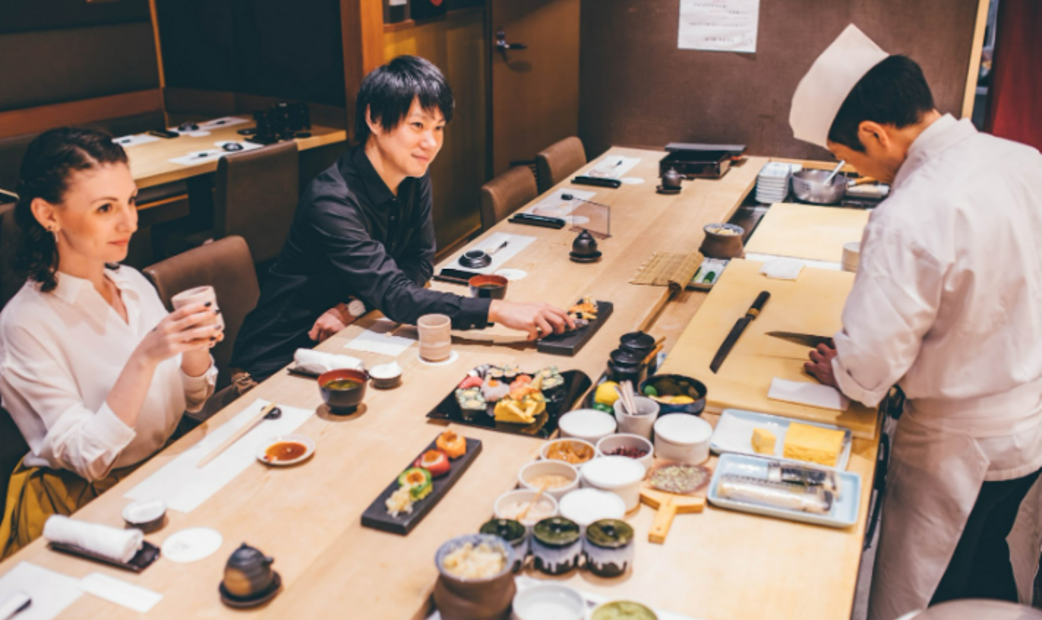
While focusing too much on rules can detract from your dining experience, there are certain points to keep in mind. In this section, we'll guide you through what to avoid to ensure a smooth and enjoyable meal for everyone.
(1) Avoid wearing strong perfume.
Japanese cuisine is known for its delicate intricacy, and aroma is a key component of the chef’s creation. When visiting restaurants in Japan, avoid using strong-scented perfume, cosmetics, or hair products to avoid introducing unpleasant smells.
Since you may be seated close to other guests at the counter, strong smells could disrupt others' enjoyment of their meal.
(2) Avoid extreme outfits or fashion.
Many high-end restaurants prohibit customers from wearing casual attire such as sandals, shorts, or revealing clothing. Be mindful not to disrupt the restaurant's ambiance. Check the reservation website for dress code guidelines at each restaurant.
(3) Show consideration and care for counter tables and tableware.
Japanese restaurants with counter seating take great care of their counter tables, treating them as sacred objects. These tables, often found in sushi and Japanese cuisine restaurants, are typically made of solid wood and crafted using traditional techniques. These establishments also serve their dishes on luxury plates created by renowned artisans or on historically significant and valuable pieces.
Avoid placing items like your smartphone or keys directly onto the counter table to prevent scratches. Use a handkerchief as a cushion or keep them in your pocket or bag. When taking photos, be mindful not to drop your smartphone on top of plates and glasses, which could cause them to break. In addition, take care not to spill drinks like red wine.
(4) Check with staff before taking pictures.
Some restaurants don't allow customers to take photos to ensure guests enjoy the dishes at their freshest and to avoid disturbing others with camera sounds. If you'd like to take photos, check with the chef or staff, or follow the guidelines posted at the restaurant or online.
When taking pictures, avoid capturing the staff or other guests in the frame. Additionally, even if you are allowed to take photos, do so quickly and enjoy the dish while it's still fresh.
(5) Avoid talking on your phone during meals.
Talking on your phone during your meal can be disrespectful and disruptive to the chef and other guests, potentially ruining an otherwise memorable dining experience in Japan. If you must use your phone, please inform the staff and step outside or to a designated area.
(6) Be mindful of other guests.
In addition to the points mentioned above, here are some tips when sitting close to other guests at counter seating:
- Speak softly instead of loudly.
- Avoid topics of conversation that could spoil others' dining experience.
- Refrain from any extreme or disruptive behavior.
4. Japanese table manners and dining etiquette tips to help you have better dining experiences
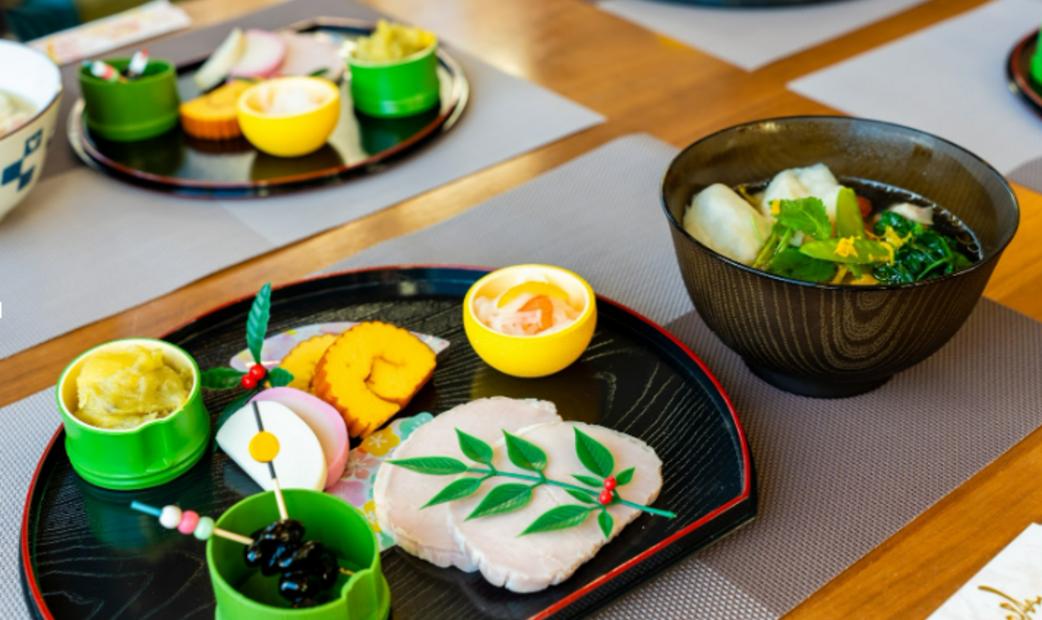
In addition to the points mentioned earlier, we'll guide you through some helpful tips on Japanese table manners do's and don'ts to enhance your dining experience in Japan. While these aren't strict rules, following them can help you avoid disturbing other guests and show respect to the chefs and for the dishes. Keep them in mind as useful references.
How to sit at a Japanese table
At Japanese low tables with no chairs, you can sit either cross-legged or in a kneeling position. Unless you're in a highly formal setting, sitting cross-legged is generally acceptable.
Say, “Itadakimasu” and “Gochisosama”
In Japan, say "Itadakimasu" before starting a meal and when you finish, say “Gochisosama" to express gratitude to the ingredients and the chef.
Be mindful of your alcohol consumption
Enjoying alcoholic beverages is fine, but avoid getting overly drunk, especially at high-end restaurants.
Do not point with your chopsticks
While learning how to use chopsticks can be a challenge, you don't need to be an expert. Just remember not to point at people with them, as it's considered rude.
Avoid chewing noisily
Chewing loudly is seen as disruptive in Japan. Try to eat quietly to be considerate of those around you.
It’s okay to slurp soup and noodles
When eating noodles like soba or ramen and sipping soup directly from the bowl, making sounds is a sign of enjoyment. (However, you don't need to force yourself to slurp if you don't want to.)
Don’t blow your nose and burp at the table
Blowing your nose or burping at the table can disrupt others' dining experiences. It's best to do so in the bathroom or away from the table.
Avoid resting elbows on the table
In Japan, resting your elbows on the table is considered rude and can make others feel uncomfortable.
Enjoy your dining experiences in Japan while following these simple manners and etiquette!
Popular Recommended Restaurants You Can Reserve on OMAKASE
Taian / Japanese cuisine / Osaka
Experience the best of Japanese cuisine in Osaka at this three-Michelin-star restaurant.
- Operation hours:
- 18:00 - 22:00
- Regular holiday:
- Mondays
- Price range:
- Dinner: USD 173.14 - USD 173.14
- Address:
- 1F Yamamoto Matsu Bldg., 1-21-2, Shimanouchi, Chuo-ku, Osaka-shi, Osaka
- Nearest station:
- Nagahoribashi Station
- Directions from station:
- 5 minutes walk from Nagahoribashi Station
- Payment methods:
- Cash and cards are available.
Electronic money is not available. - Seats:
- Counter 12 Seats
Table 4 Seats - Awards:
-
Michelin
-
Howard5.0Posted on :06/25/2024
-
R. Ruiz5.0Posted on :06/11/2024
-
Cliff Bowen5.0Posted on :05/28/2024
Udatsu Sushi / Sushi / Tokyo
Sushi meets art in this restaurant with an art gallery ambience, offering a traditional, authentic Edomae (Tokyo-style) sushi experience.
- Operation hours:
- Lunch: 12:00 - 15:00
Dinner: 18:00 - 23:00 - Price range:
-
Lunch: USD 103.88 - USD 259.70
Dinner: USD 129.85 - USD 259.70 - Address:
- 2-48-10, Kamimeguro, Meguro-ku, Tokyo
- Nearest station:
- Nakameguro Station
- Directions from station:
- 5 minutes walk from Nakameguro Station
- Payment methods:
- Cash, Credit card
- Seats:
- 13 Seats
- Awards:
-
Michelin
-
Gol gis5.0Posted on :07/11/2024
-
SK Leung4.5Posted on :07/10/2024
-
Emanuela5.0Posted on :06/28/2024
Ichiu / Sushi / 東京
Enjoy an omakase course featuring the highest quality Japanese dishes and Edomae sushi.
- Operation hours:
- 18:00-23:00
- Regular holiday:
- Mondays
- Price range:
- Dinner: USD 157.40 - USD 157.40
- Address:
- 2-22, Kagurazaka, Shinjuku-ku, Tokyo
- Nearest station:
- Iidabashi Station, Kagurazaka Station
- Directions from station:
- 5 minutes walk from Iidabashi Station
8 minutes walk from Kagurazaka Station - Payment methods:
- Cash, Credit card
- Seats:
- 8 Seats
- Awards:
-
Michelin
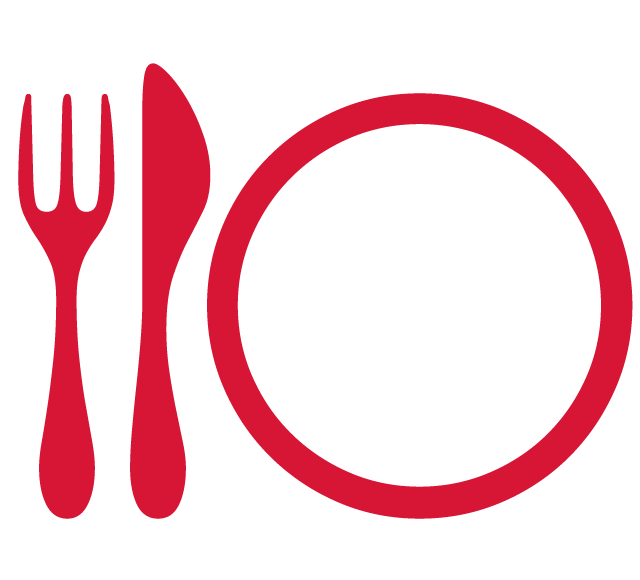
-
Justin5.0Posted on :07/21/2024
-
Larry S5.0Posted on :05/15/2024
-
Steven Wesel5.0Posted on :05/08/2024



